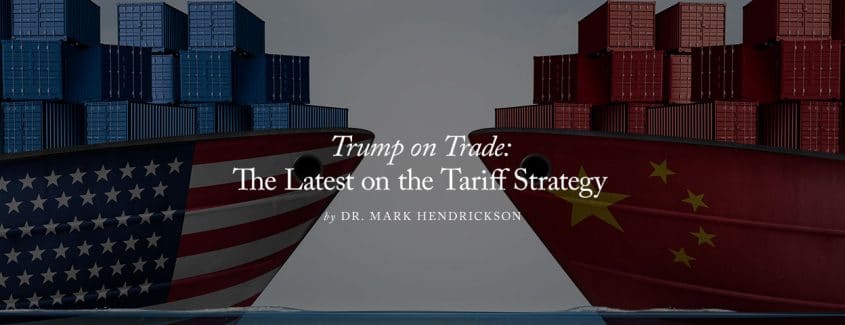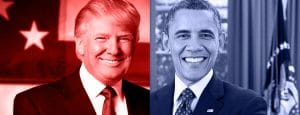
When I commented in March about President Donald Trump’s plan to impose tariffs on imported steel, I was hoping that he would back off from imposing tariffs on our allies. That is because the danger to our national security isn’t steel or autos made in Mexico, Canada, or Europe; rather, it is China’s rapacious assault on intellectual property and its “Made in China 2025” master plan for achieving world dominance in 10 crucial technologies.
For a few months, I got my wish. The president granted temporary exemptions to our allies. On June 1, however, President Trump imposed tariffs on steel and aluminum against our closest neighbors and oldest allies to match those he had already imposed on China and other non-Western countries.
Those new tariffs didn’t make much economic sense. The steel tariffs against Canada and Mexico were particularly puzzling. In the two most recent years, Mexico incurred a $3.6 billion steel trade deficit with the United States. Canada also has been running a steel deficit with the U.S.—a reported $2.06 billion last year.

Support our Student Fellows Program, building the next generation of American leaders.
Worse, as I and many other economists had warned, Trump’s tariffs have hurt many American businesses and workers. Hardly a day goes by without another report of an American company being negatively impacted by tariffs. Some, from specialty nail manufacturers to electronics assemblers, to textile workers, are no longer price-competitive in their sales markets because tariffs have increased the cost of imported inputs. Some agricultural producers have goods piling up in storage because retaliatory tariffs abroad have priced them out of formerly profitable export markets. Recognizing the losses his trade policies are causing farmers, Trump has promised $12 billion in emergency relief to those affected, further aggravating federal debt.
In the steel industry itself, the Competitive Enterprise Institute calculated that Trump’s tariffs on steel could ultimately result in a tradeoff of approximately 33,000 American steel jobs saved and a loss of 146,000 other American jobs. On an economy-wide basis, the U.S. Chamber of Commerce projected that a full-blown trade war could wipe out over 2.5 million U.S. jobs.
In March, President Trump tweeted that “trade wars are good and easy to win.” If victory in a trade war is defined as the U.S. suffering fewer economic casualties than the other side, yes, the U.S. might “win,” but that would be a hollow victory to Americans who would lose their jobs in a trade war.
On the other hand, President Trump and millions of Americans support his aggressive trade tactics because they are fed up with the unfairness of foreign governments treating American businesses having higher trade barriers than Uncle Sam. So, here is the problem: How do you convince your closest trading partners to relinquish advantages they have enjoyed for decades?
This is where Trump’s crazy, economically irrational, bite-off-your-nose-to-spite-your-face trade war comes into play. Our trading partners never thought an American president would be willing to risk the pain to Americans of a trade war. Well, Trump is willing. He is playing a high-stakes game of “chicken,” calculating that the United States can withstand the economic pain of higher tariffs longer than our allies can, and that they will capitulate. Indeed, it may turn out that Trump is crazy like a fox.
Consider: Trump cagily cut business taxes and regulations before initiating his trade war. That boosted the U.S. economy with strong tailwinds to counteract tariff-caused headwinds. Like when President Reagan outfoxed the Soviets in the 1980s, Trump knows that the American economy is stronger and healthier than that of our “adversaries,” giving us an advantage in the contest.
It is encouraging that Jean-Claude Juncker, President of the European Commission, met with President Trump last month and they apparently agreed to lower tariffs, both recent and longstanding. Also, rumors are that Mexico and Canada may soon amend some of the asymmetries in NAFTA. And—music to an economist’s ear—the president himself stated that his goal was to have “zero tariffs.” None of this is close to a done deal, but if the president eventually manages to negotiate overall lower tariff barriers that result in a restoration of jobs recently lost and thousands of additional American jobs to serve newly open foreign markets, it would be a historic achievement, both economically and politically. Good luck, Mr. President.



